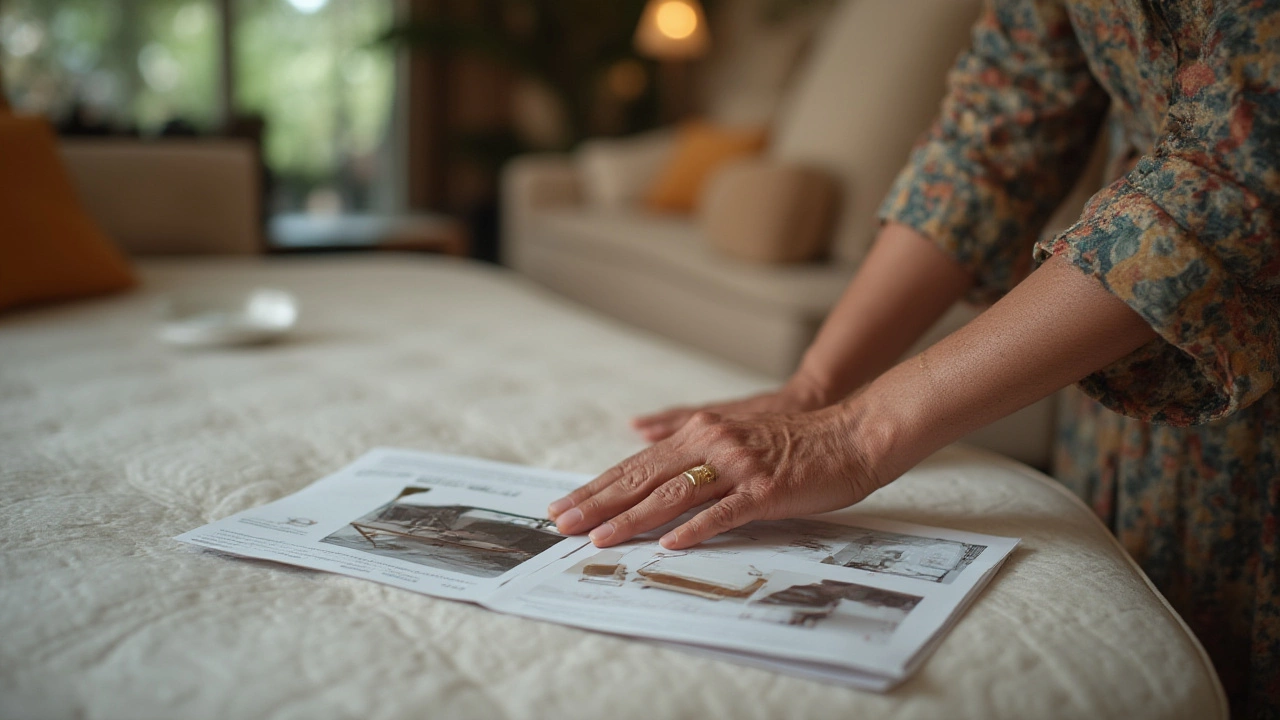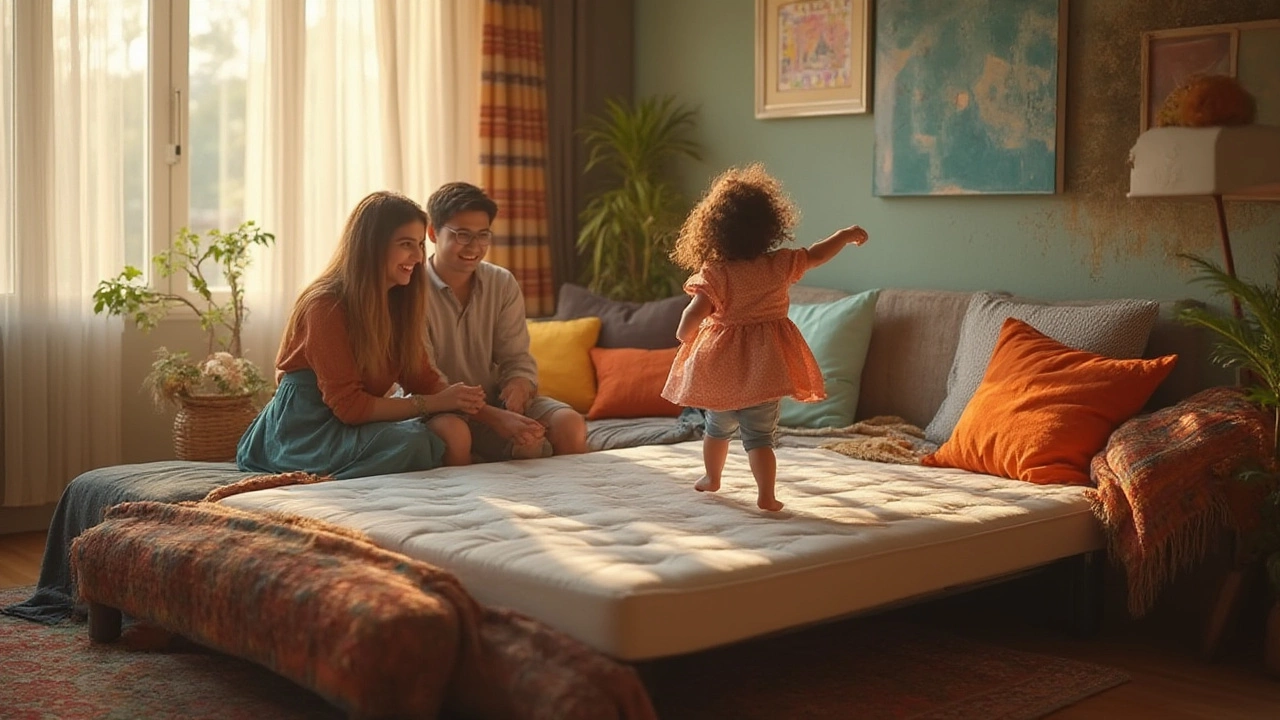Picture this: it’s midnight, your best friend just texted they’re crashing at your place after missing the last train, and you panic, staring at the sofa bed in the living room. Are you going to curse yourself tomorrow, or will they actually wake up feeling fantastic? Sofa beds aren’t exactly famous for luxury comfort. People swap stories of aching backs and lost sleep like it’s badge of honor. But is that reputation fair? Or are we judging based on models from decades ago, the ones with springs digging into your ribs and lumps you feel for days? It turns out, manufacturers have put some serious thought into flipping the script, and the truth about sofa beds is a lot more interesting—and promising—than you might expect.
The Truth Behind Sofa Bed Comfort: From Old Nightmares to Modern Realities
Let’s be real, sofa beds used to be the butt of every bad guest-room joke. Those old fold-out contraptions from the ‘80s and ‘90s? They were nightmares in pleather: thin, squeaky mattresses barely sitting on metal bars, springs poking your back, and frames that seemed custom-built for discomfort. The idea was to cram in sleep functionality wherever possible, but no one expected you to actually enjoy it. Fast forward to today, and you’re looking at a world of difference. Modern sofa beds aren’t just afterthoughts—they have proper engineering, with some brands using exactly the same mattress technologies you’d find in full-sized beds.
First, ditch any assumptions based on ancient relics. If you visit a big furniture store in 2025, you’ll spot options with memory foam, pocket springs, and hybrid mattresses. High-density foam (usually at least 2.2 lbs per cubic foot) and even gel-infused options are now common. Some leading Scandinavian brands—think IKEA’s FRIHETEN or British-made Willow & Hall—offer sofa beds that feel shockingly close to a real bed. These aren’t wishful thinking; in fact, Consumer Reports ran extensive side-by-side sleep tests in 2024 and found that high-end sofa beds with hybrid mattresses scored 4.2 out of 5 on support and comfort, just a shade below permanently fixed beds. The secret isn’t magic; it’s better materials (denser foams, quality springs), and smart frame designs that avoid those famous support bars pressing into your back.
Another big change: mattress thickness. Older models were usually stuck at around 2 to 3 inches thick, barely more than a camping mat. Today’s best sofa beds push up to 6 inches—with multilayer memory foam and support cores—putting them in league with actual mattresses. One surprising fact: it’s not always about thickness. A well-designed 4.7-inch mattress with proper zoning and support can outperform a thicker but cheaper cousin. The point is, comfort matters to buyers, and makers figured that out fast, especially as homes in cities are getting smaller and more people want their one piece of living room furniture to truly double as a guest bed, home office lounge, or even nap station for parents with restless toddlers.
Don’t forget the frame. Some brands use high-strength wood or steel with flexible slat bases—just like real bed frames. These distribute weight evenly, support your body, and avoid that famous “bar-through-your-back” feeling. Italian design houses, famous for clever apartment furniture, often use mechanisms tested for thousands of open-close cycles. They’re easy to open without trapped hands, jammed fingers, or awkward heaving. So, if you’re still imagining granddad’s rickety foldout, it’s time to update your images.
Comfort isn’t just about the mattress and mechanics, though. Upholstery matters. Some people are sensitive to polyester, while others love it. Softer woven fabrics or smooth leather can make a huge difference, especially if you sleep hot or cold. Some sofa beds now come with built-in moisture-wicking covers, removable and washable for allergy control—another win if you have guests with sneezes or pets.
Real-world review data backs all this up. On major furniture retail sites in the UK and US during 2024, the most comfortable sofa beds earned average user ratings of over 4.5 stars, with comments about “couldn’t believe this was a sofa bed” or “slept better than in my usual bed.” Of course, the cheapest models still cut corners, but if you do even a little homework, you don’t have to roll the dice with comfort.
Bottom line: you can absolutely find a sofa bed that’s genuinely comfortable to sleep on. But it doesn’t mean every sofa bed out there is a winner. The gap between a good and bad one is still massive, and paying attention to details is key.

What to Look for in a Comfortable Sofa Bed: Features That Make or Break Overnight Comfort
Choosing the right sofa bed takes a little detective work, but those awkward nights on hard, uneven surfaces can totally be avoided. Start with the mattress—because that’s where most companies either shine or completely fail. Ideally, hunt for mattresses that are at least 4 inches thick, made of high-resilience foam or pocket springs. Hybrid mattresses (a combo of memory foam and springs) offer the best support for most sleepers. If you tend to run hot, gel-infused memory foam helps dissipate heat, so you (or your sweaty-palmed guest) don’t wake in a puddle of misery.
Frame design gets overlooked, but it makes or breaks the experience. A bad support system can mean the dreaded broken-in-back morning. Go for slatted bases—they spread body weight out evenly. If you spot a frame that uses just webbing or flat panels under the mattress, skip it unless you’re buying for kids under 90 pounds. Also, easy mechanisms matter, especially if you’re pulling out the bed alone after a long day. Some Italian-made systems let you lift and pull out the bed in one smooth motion—no wrestling required.
Test-drive before you buy. If you’re shopping at a local store, actually sit, recline, and, if the sales team allows, lie down on the sleeper. Get a feel for where your hips, back, and shoulders settle. At home, after delivery and before the first use, do a “dry run” with your guest pillow and blanket. Does the bedding bunch? Does the mattress sag or tip? Don’t trust weight limits at face value; see if it passes the “human” test.
Upholstery is another big deal. Polyester blends are durable and easy to clean, but they can feel scratchy or hot after a while. Cotton-linen fibers are more breathable, and velvet or microfiber add softness. If you have allergies (your guests will thank you), look for removable, machine-washable covers. In humid climates, some people add thin antimicrobial mattress toppers to prevent mustiness. Pay attention to hinge covers and under-bed storage, if that’s part of your model: badly designed hinges or rough wooden edges under cushions are recipe for stubbed toes and snagged pajamas.
One thing lots of people miss? Lounging comfort. Remember, your sofa bed isn’t always a bed. Test how it feels to binge a show, prop your feet up, or sprawl with a laptop. The armrests, seat depth, and back height matter just as much as the sleeping surface. Narrow, upright sofas look stylish but feel awful for sleep and movie marathons. Flip-down backrests, deeper seats (23-25 inches), and plush cushions help.
Here’s a quick checklist for finding comfort gold:
- Mattress: Minimum 4 inches thick, memory foam or springs, plus removable cover
- Frame: Slat or solid wood/steel, skip wire mesh or webbing
- Mechanism: Test for smooth open/close, no squeaks, no jams
- Upholstery: Breathable, easy to clean, soft to touch
- Lounging: Seat depth and cushion firmness
Experts recommend measuring your space carefully—don’t just trust dimensions on a product page. Include the full length when open and check you can walk around the bed (especially in apartments or shared homes). Some of the best space-saving options are "clic-clac" and "futon" mechanisms, which flip flat in seconds and take up less room. Ottoman-style models lift up for storage, so you stash pillows and sheets without playing furniture Tetris.
If you’ve got a specific sleeping style—side, back, stomach—this matters too. Softer foam helps side sleepers avoid hip pain. Back sleepers usually prefer a little more firmness. Having a spare mattress topper handy can turn a decent sofa bed into a great one, and it’s easy to toss in a closet until that crash-prone cousin arrives.
Diving into specifics, the Joybird Eliot Sleeper and IKEA’s HOLMSUND are two mid-tier picks that often appear in “best of” guides from sleep specialists. Both tick the boxes: thick hybrid mattresses, sturdy frames, and machine-washable covers. Higher budgets can go for American Leather’s Comfort Sleeper, which receives praise even from picky mattress reviewers and physical therapists. They all prove that sofa-bed comfort isn’t just a myth now; it’s achievable with smart shopping.
A final tip: warranty matters. Good brands give at least five years on the mechanism and frame—critical when you’re pulling out and folding in the bed for years on end. Mechanism issues cause the majority of problems (if one thing fails, it’s usually the folding parts), so long-term coverage is your friend.
If you buy online, read real customer reviews—especially negative ones. Look for patterns: do lots of people complain about sagging or creaking after six months? That’s a red flag. Spend time comparing because a little extra effort up front can save you from waking up sore and grumpy, or dealing with regret next holiday season, overloaded with unexpected guests.

Making Your Sofa Bed the Most Comfortable Spot in the House
Once you’ve picked a quality model, comfort isn’t just about the basics—it’s about making the whole sleeping experience as good as possible for you or your guests. If you’re buying a sofa bed for everyday sleeping (say, in a studio apartment), definitely grab a high-quality mattress topper. A 2-inch gel-foam or latex topper can smooth out any tiny bumps and make the whole bed feel like a plush mattress. They roll up for storage after you have friends over, and can add years to your sofa bed’s lifespan. For occasional guests, keep a clean, lightweight topper folded in a closet or inside under-bed storage when not in use—many modern sofa beds are designed with storage for exactly this reason.
Bedding also plays a role in comfort. Ditch stiff, starchy sheets that can bunch up when the bed gets folded away. Opt for stretchy jersey or bamboo-linen blends—these hug the mattress, move with the folding mechanism, and feel softer on skin. Quilted mattress protectors (not to be confused with thin plastic covers) can add softness, absorb sweat, and protect from spills or pet fur. Always use a fitted sheet sized *just* for your specific model—the difference between a well-made-up sofa bed and one that feels like camping is huge.
Pillow selection matters more than you’d think. Since sofa beds are often firmer than a regular mattress, a softer pillow gives the perfect sink for your neck. If you’re sleeping two, make sure both guests have the style and thickness they like. Toe off to a home store and experiment—a $35 pillow beats an expensive mattress if you finally wake up without a crick in your neck. Throw blankets and comforters should be easy to clean, soft, and not too bulky (so you don’t wind up wrestling the fold-out every time you want to close the bed).
Room setup also dictates a lot. Make sure there’s room to walk around the open bed, and place a nightstand or small table near the sleeper with an outlet and reading lamp. No one likes fumbling for their phone or glass of water in the middle of the night. If your sofa bed is near a drafty window, add blackout curtains, and use a portable fan or white noise machine to drown out city sounds. A little ambiance (cozy lamp, candle, mint or lavender sachet) goes a long way.
If you have pets or kids, invest in washable covers or even a waterproof mattress protector. Nothing ruins long-term comfort faster than a spill, and cleaning up in a hurry can be a pain. If you entertain often, make up a “guest box” with folded sheets, spare pillows, and toiletries—so you aren’t digging through laundry baskets the minute someone plans to stay over.
For sofas used mostly for sitting or lounging, fluff cushions weekly, rotate them, and vacuum often. This keeps the frame and upholstery in shape for years and wards off the “sunken seat” effect that can make sleeping after years of lounging less than ideal. Some sofa beds let you swap cushions entirely after a few years—a handy perk for keeping things fresh, which wasn’t even an option two decades ago.
Here’s one perk few people mention: sofa beds are perfect for midday power naps, movie marathons, sleepovers, and lazy weekends when you want to sprawl out with pets or kids. The right model can be the most comfortable and hardworking piece of furniture in your home, making every square foot count. So, yes—a comfortable sofa bed isn’t just possible. With the right model, setup, and a few little extras, it’s easy. Friends might even start inviting themselves over for the sleepover.

